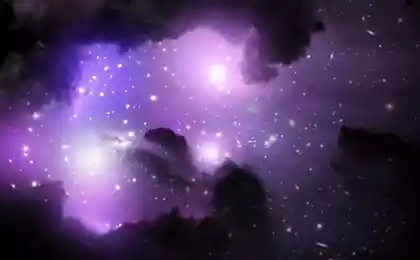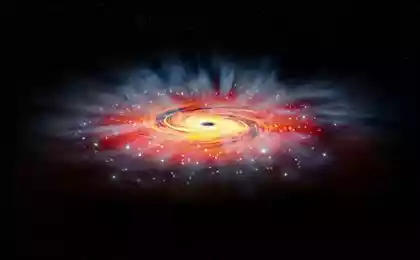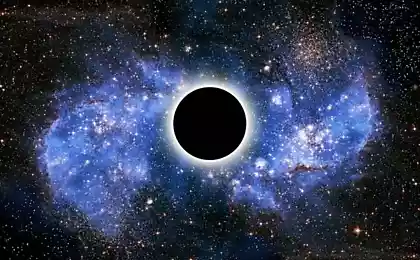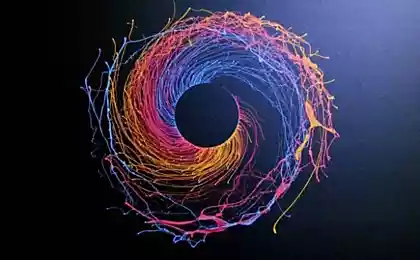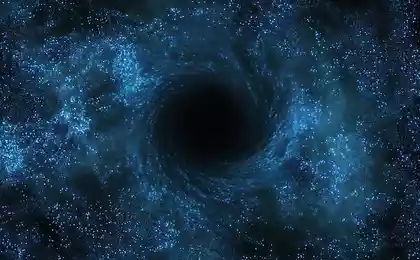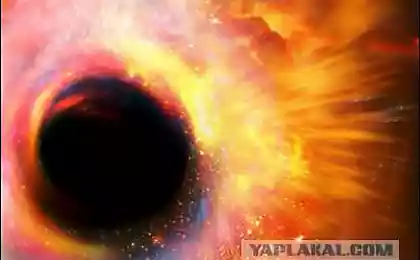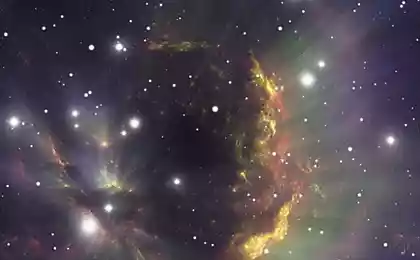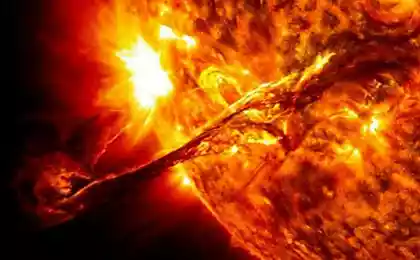828
10 surprises that we were treated to black holes

A black hole is a huge amount of matter squeezed into a tiny area with an enormous gravitational attraction, is not the relevant size of this region. Many black holes are formed when a giant dying star quanta collapse into the dark. These eaters all have such powerful gravity that even light can not leave certain limits hole. So scientists say.
Imagine it is. If Earth became a black hole (this of course will not happen), it would weigh the same, but the size was smaller than the eyeball. In this case the eyeball would have the same gravitational attraction, the Moon would have revolved in its orbit.
You can't see a black hole directly, because the border around her womb (the event horizon) prevents the light to return. But the invisible wind bends and shakes the trees — we know that black holes exist because we see the effects that they exert on their surroundings.
Not all scientists believe in black holes. But those who believe, never cease to amaze.
Our ancestors could see the black hole of the milky Way

About two million years ago in the center of our galaxy there is a supermassive black hole, illuminating everything around radiation light. At that moment the man just stood up on his hind legs and learned to walk upright. Our ancestors could see the moon of light in the southern sky, bright spot.
Our black hole Sagittarius A* is quiet. But then she was an active galactic nucleus, producing energy that outshone all the rest. The reason for this was "feeding" black hole, its gravitational pull attracted matter, forming a disk, which is heated and lighted. If the disk consists of a gigantic amount of matter, two bright jet (stream) of high-energy particles will be emitted from the black hole perpendicular to its rotation.
Astronomers have developed a theory of active galactic nuclei in 2010, when I came across two of the Fermi bubble, stretching 25,000 light years above and below our galaxy. Scientists believe that the jets of active galactic core could create these bubbles from one to three million years ago. Our ancestors could see the lights of a black hole a few thousand years. Chris stringer, an anthropologist, believes that this "was the beginning of the genus Homo. Tools of stone have already begun to do, but the brain has just started to increase." If Sagittarius A* is again active galactic nucleus, we can now get your own light show in the night sky.
Not only black holes are powerful sources of energy
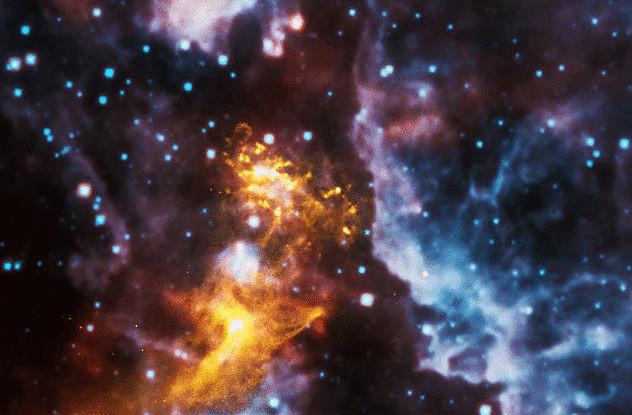
For many years, many scientists believed that extremely bright x-ray sources, known as ultraluminous x-ray sources (ULX), occur when black holes eating stars or other matter. When the powerful gravity of the black hole attracts the gas nearest the star, the gas is twisted into a spiral and forms an accretion disk around the black hole. As the water spins, before you go in the water, the gas is highly accelerated, heated to extremely high temperatures and begins to emit x-ray light in all directions. The larger the black hole "eats", the brighter the light.
That was the theory. But then in the nearest galaxy M82, astronomers accidentally discovered the source of ULX, which pulses, emitting bright x-rays that fall on Earth every of 1.37 seconds, like a beacon of light. The problem is that black holes do not pulsate. Pulsars pulsate.
A pulsar is a rotating neutron hole (the remains of dying star that was not big enough to become a black hole) that emits x-ray light in the magnetic poles. However, the pulsar in the galaxy M82 was 100 times brighter than allowed for its mass-if guided by physical Eddington limit. He wasn't supposed to be the source of ULX. Roughly speaking, the pulsar had the power of a black hole with much less mass. Sort of a equivalent of a black hole on a diet.
Now astronomers should reconsider other sources ULX and check pulse. It turns out, not every source ULX black hole.
Hungry than you can imagine

Until recently, scientists thought that the size of the black hole determines the maximum rate at which it absorbs and generates light (above the Eddington limit). Until I found a P13, a black hole in the galaxy NGC7793, which rotates around a supergiant stars, devouring her. Thus P13 consumes gas his companion up to 10 times faster than was possible according to astronomers.
P13, believed to be 15 times less than our Sun, but a million times brighter. She can absorb his companion less than a million years, which is quite fast by the standards of space. This little black hole consumes matter equivalent to a hundred billion good sandwiches or hot dogs every minute. For this reason, the astronomers to joke: "As shown by the legendary eater of hot dogs Takeru Kobayashi [very bad guy], size doesn't always matter in the world of eating speed, and even a small black hole could swallow gas with incredible speed," Roberto Soria.
As the pulsar M82, P13 is the ultraluminous x-ray source, which also violates the Eddington limit. Astronomers trying to understand whether there is any limit of how many can eat a black hole.
Supermassive black holes may be bigger than we thought
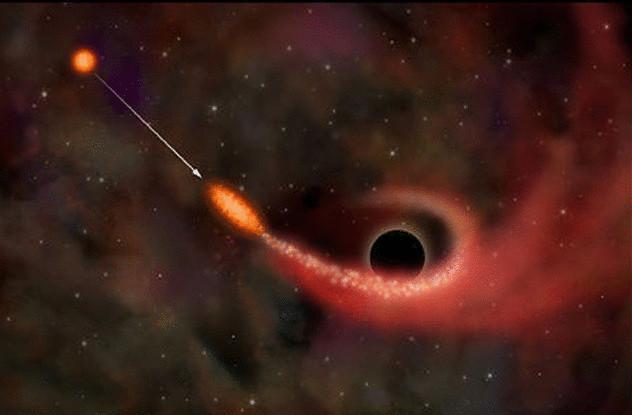
Black holes come in different sizes, from primary (about the size of an atom, for example) to superheavy (with a mass of more than a million suns, Packed to the size of the solar system). May be even a rare giant ultramassive black holes. Once thought that only large galaxies may be massive black holes. But in early 2014, astronomers have discovered more than a hundred dwarf galaxies with supermassive black holes in the center. Compared to the Milky Way, in which 200-400 billion stars, a dwarf galaxy may be only a few billion stars.
In September 2014, astronomers have found a supermassive black hole in the ultracompact dwarf galaxy M60-UCD1, the densest known galaxies today. If you lived in M60-UCD1, you would see a million stars in the night sky (on Earth with the naked eye can only see about 4000).
Although the mass of the black hole in the center of the milky Way is about four million solar accounts for less than 0.01% of the total mass of our galaxy. Compared to her, a hole in the center of M60-UCD1 is a monster with a mass of 21 million suns — 15% of the total mass of the galaxy. On the basis of these findings, some astronomers believe that many compact dwarf galaxies may be the remains of larger galaxies that were torn apart, faced with other galaxies. Therefore, their centers can be many supermassive black holes.
Young eaters weight

Quasars are the bright centers of the most distant galaxies that we can see in the Universe. I believe that they represent supermassive black holes with accretion disks, emit extremely bright x-ray light. Quasars can Shine in the trillion times brighter than our Sun. And can be billions of light-years from Earth. Look at Kvazar — it's like looking at his childhood picture.
Scientists have long thought over how a black hole could start with 10 solar masses and quickly grow to a billion solar masses shortly after the Big Bang. Under normal conditions, the gas of the spiral shrinks to the black hole, forming an accretion disk. A certain quantity of gas flows inside, but typically there are processes that slow the growth of the black hole.
Scientists believe that the young Universe was a stream of cold gas, more dense than it is today. Young black hole could move faster, constantly changing direction, like the baby Pac-Man, devouring the young stars around. Rapid changes of direction could cause a black hole absorbed the material directly from the dense gas flows so quickly that its growth is not slowed down. The older became a black hole, the faster it was filled. Within a relatively short 10 million years, the black hole could grow from 10 solar masses to 10 000. Then the growth slowed down. But the path to the mass of a billion solar masses were already laid.
Black holes prevent the formation of stars
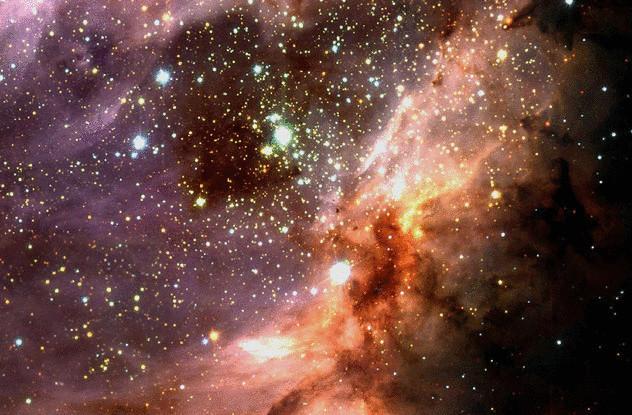
Scientists have discovered that massive black holes in Mature galaxies can interfere with the development of young stars, spewing particles that emit radio waves. Almost traveling at relativistic speeds, these hot jets are acting as switches, not letting gas in the galaxy can cool and condense into new stars. Scientists do not know why the Central black holes in old and often elliptical galaxies begin to emit these particles.
Until recently, scientists believed that the Central black holes to blame for the presence of "red and dead galaxies," composed only of old stars. But then they found a few compact young galaxies that have died prematurely. These young galaxies have the mass of the milky Way squeezed into a relatively small area.
On the basis of their research, a team of astronomers have decided that these stars are responsible for activating their own switch in young galaxies. Flash zvezdopada activity began with the collision of two gas-rich galaxies, which brought a lot of cold gas into the compact center of the merging galaxies. Then the energy of frenzied activity could knock the rest of the gas that led to the cancellation of the future of star formation. It is also possible that the gas in these galaxies simply became too hot to cool down and condense into new stars.
"Eye of Sauron" has shown that the black holes weigh more
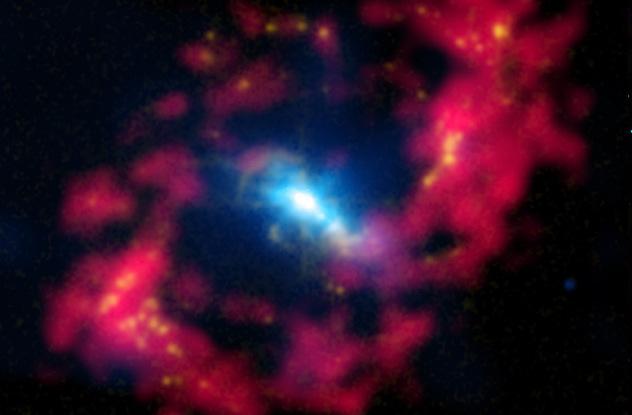
Now astronomers think supermassive black holes in the centers of galaxies weigh 40% more than originally anticipated. This may also explain why the Eddington limit does not work in some calculations of mass.
The researchers used a ground-based technique for measuring the distance to the galaxy NGC 4151, the active nucleus which is called the "Eye of Sauron" because it looks like the same object from the movie "Lord of the rings." Continue measuring the distance from Earth to NGC 4151, or rather to its Central black hole was estimated at 13-95 million light years. Using the Keck telescopes in Hawaii were able to achieve 90-percent accuracy. Black hole in NGC 4151 active, the nearest gas absorbs and emits x-ray light. Ultraviolet radiation heats the disk of dust orbiting the black hole. After 30 days, the dust begins to emit infrared radiation. Based on the time and speed of light, scientists calculated the distance from the black hole to the dust disk. Further calculations showed that to the "Eye of Sauron" approximately 62 million light years. Based on these calculations and techniques, scientists can now more accurately calculate the mass of supermassive black holes.
To explain the flight of bumblebees
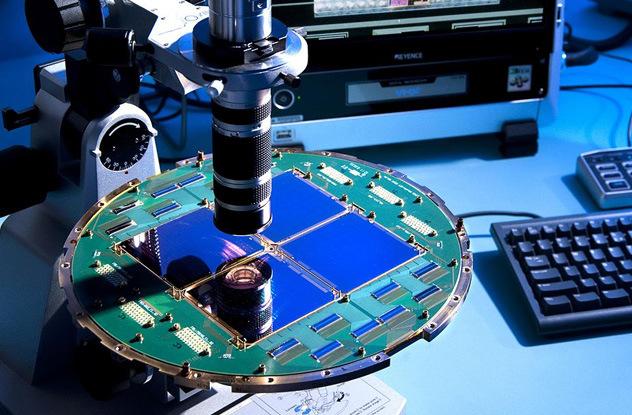
Until recently, researchers gravity mostly assumed that space-time can not be turbulent. But this opinion is proved incorrect when scientists decided to test whether gravity is to behave like a liquid. Under certain conditions of turbulent liquid. They can twist and swirl.
The scientists decided to investigate on the example of a rapidly rotating black hole. Space-time around this hole is less viscous, which increases the chance for the emergence of turbulence, similar to any light liquid. The results surprised everyone.
"Over the past few years we have gone from a serious doubt about the fact that gravitation can be turbulent, to almost complete certainty that, Yes, it can," says scientist Luis Lehner. Very soon the new detectors will allow us to capture gravitational waves, ripples in space-time that behaves like waves in the ocean, when the ship sails. In space gravity the liquid can be covered with ripples due to a powerful cosmic events like the merger of two black holes. Also, these studies can help in the study of turbulence on Earth — including the physics of hurricanes, the influence of wind on the aircraft and completely impossible at first glance, the flight of bumblebees.
Criminal the secret of the galactic center

Some astronomers believe that in space there is something criminal in the conversion of pulsars in the small black holes. They call it "the missing pulsars". As we know, a pulsar is a spinning neutron star (the remains of a star that was too small to become a black hole) that emit the radiation with the magnetic poles like a lighthouse. With so many stars in our galaxy at least 50 dead stars pulsars should be in the center of the milky Way. But astronomers were able to find only one.
There are several possible explanations, but the most interesting include the black Materia. Like black holes, dark matter is invisible and can be detected only by its gravitational influence on other objects in space.
Several scholars have suggested that the gravity of the pulsar can attract certain particles of dark matter, causing the pulsar "swells" up to a size that collapses into a black hole. The pulsars become so big that punched a hole in the fabric of space-time and disappear.
"Dark matter may be so tight or so fast in the centers of ordinary stars, says scientist Joseph Bramante. But in pulsars the dark matter can be collected in 2-foot ball. Then that ball collapses into a black hole and sucks the pulsar". Some dark matter also can combine matter and antimatter in the particle. These particles annihilate each other upon contact. Scientists believe that only asymmetric dark matter particles (containing either matter or antimatter) can accumulate in the core of the pulsar over time. Since in galactic nuclei there is a large concentration of dark matter that may explain why lack of pulsars at the center of our milky Way.
The universe could be born from a four-dimensional black hole

One of the big problems with the Big Bang theory is that our scientifically predictable that the universe came from a singularity, infinitely dense point, for which the rules of scientific predictability is not working. Physics just don't understand the singularity. They could not explain what caused the Big Bang. Some physicists do believe it is unlikely that such a chaotic beginning of the Universe will produce a relatively homogeneous temperature.
Three researchers from the Perimeter Institute proposed a new theory, which mathematically proved and fully verifiable. They claim that our universe was the result of brutally ejected material in the process of death of a four-dimensional star, the inner layers collapsed into a black hole. In our three-dimensional universe, a black hole has a two dimensional event horizon, point of no return for anything that falls into a black hole.
In a Universe with four spatial dimensions, four-dimensional black hole would have a three-dimensional event horizon. Our universe, the ejected material of the supernova, would constitute a three-dimensional three-dimensional membrane around the event horizon. This membrane grows, we call this the growth of space expansion. Our three-dimensional universe was supposed to inherit the homogeneity of the parent four-dimensional universe, if the latter would exist for a long time. If we consider this theory absurd, scientists retort, assuring us that we just don't understand the four-dimensional universe. Perhaps our three dimensional thinking is only the tip of the iceberg of reality.
Materials listverse.com
Source: hi-news.ru
